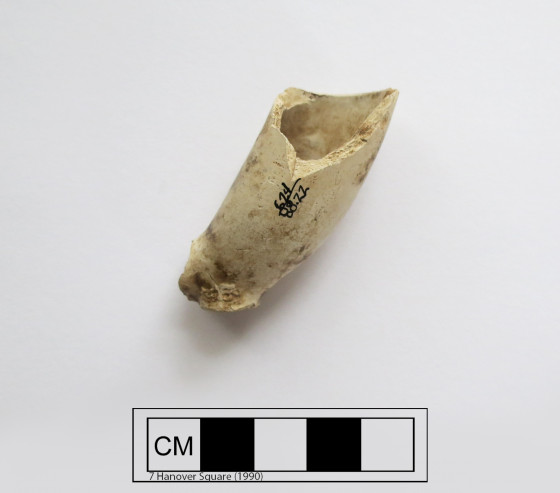This context (Catalog #88: Lot 12, Test Cut F, Stratum 7, Level a) consists of artifacts found in a dark grayish-brown sandy silt immediately adjacent to a stone wall located in Lot 12. The wall was believed to be remnants from the Gulian Verplanck House dating to the late 18th century. The deposit, uncovered in Test Cut F, extended approximately 22 inches north of the stone wall and appeared to be a builder’s trench associated with the wall’s construction. The trench was also dug through a deposit of fine sand as well as through Stratum V. Since this trench was dug through Stratum V, but began beneath Stratum IV, the excavation of the trench and construction of the stone wall took place after the deposition of Stratum V and before Stratum IV, likely around the late 18th century.
The deposit contained a high density of brick and mortar as well as moderate densities of both architectural and non-architectural artifacts. The dwelling associated with the stone wall was likely constructed by Gulian Verplanck after both the American Revolution and the fire of 1778. Prior to this, the property was owned by Henry Van Vleck and the remnants from his house, destroyed in the aforementioned fire, can be found in a neighboring deposit. Although the precise date is unknown, sometime after the fire and at least by 1789, Van Vleck sells his property to Gulian Verplanck.
For more information about the deposits associated with Lot 12, please read pages 155 to 191 of the 7 Hanover Square site report.
-
Collection method
Excavated this context using trowels and shovels. All of the soil was dry-screened using 1/4 inch mesh.
-
Soil description
Black-brown sandy silt with lots of charcoal and mortar
-
Munsell
Not recorded







